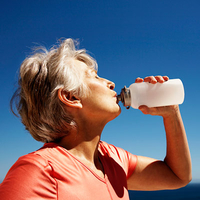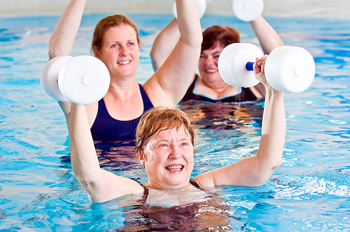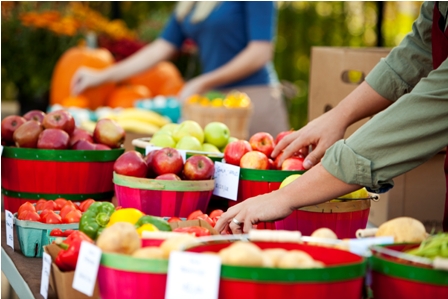Summer Safety with Diabetes
 |
Summer is here and with that, it is time to think about summer safety. When you have diabetes, there are some additional safety concerns to consider.
If you are on insulin, you may be prone to more hypoglycemia in the summer months. Higher temperatures speed up your metabolism. If your metabolism is increased, your insulin may work faster and cause your blood sugars to drop.
Often in the summer, you are more active. Increased activity also increases your risk of hypoglycemia.
|
|
| Tips to help you "Beat the Heat" with Diabetes
1. Avoid dehydration
- It is important, especially with diabetes, to drink water and sugar free drinks to stay hydrated
2. Avoid fluctuating blood sugars
- Remember to keep treatment for low blood sugars on you at all times (glucose tablets, juice box, or lifesavers)
- Have a snack available at all times
- Check your blood sugar more often, especially if you are hot or doing activities
|
 |
3. Keep your diabetes supplies out of the heat
- Medications such as insulin or pills can lose or change their effectiveness, so keep your supplies in a cool place or an insulated container with a cold pack
- Your strips for your blood glucose meter can also be affected by extreme heat, so keep your strips in their proper container and keep both your meter and strips in a cool place, such as an insulated bag
- Do not leave your supplies in the car. Your car can heat up faster than any location in the heat
4. Keep your diabetes supplies on you
- If you are travelling by car, bus, train or airplane, keep your diabetes supplies with you at all times. Do not place them in luggage that is stored in the trunk or in cargo storage
5. If you wear an insulin pump
- Check to make sure your adhesive securing your infusion set is intact. If you are perspiring a lot, try using a spray of antiperspirant on the insertion site after your usual skin-prep. Other skin-barrier preps such as Skin Tac or a compound tincture of benzoin help
- Use a protective pouch with a small cold gel pack placed inside the pouch to protect your insulin from the effect of heat
- If you are sitting in the sun, cover the pump with a towel to protect it from prolonged direct sunlight
6.
You must be "5 to drive"
- Check your blood sugar level before driving (whether you are driving a car, a motorcycle or a boat)
- While driving, stop and check your blood sugar level every 4 hours or if you think your blood sugar is low
- At all times, keep fast acting carbohydrates (glucose tablets or fruit juice) with you as well as in the vehicle
|
7. Stay active
Summer is a great time to be active, but remember to:
- Check your blood sugar before, during and after activity/exercise
- Keep treatment for low blood sugar and a snack on you at all times
- If you take insulin, avoid injecting it in your exercising muscles (eg. avoid your legs if you are walking)
- Stay hydrated with drinking water
- Watch for delayed low blood sugars. Exercise can cause your blood sugar to drop up to 12 hours later
- Consider exercising in an air-conditioned gym or ealy in the morning or later in the evening
|
 |
8. Remember your sunscreen
- Wear sunscreen with a minimum of 30 SPF and apply at least 30 minutes before you go out to prevent sun burns
- Apply sunscreen often while outside, especially if perspiring or swimming
9. Protect your feet
- Wear water shoes while swimming in a lake or walking on the beach. It is hard to see the bottom of lakes or know what is buried under the sand, so protect your feet from cuts and injury
10. Enjoy the seasonal fruits and vegetables
While vegetables are generally lower in carbohydrate than fruit, many vegetables do need to be considered in your carbohydrate counting when assessing your insulin needs, especially in summer when we tend to eat more, as produce is so readily available and fresh.
- Vegetables such as peppers, squash, peas, corn, carrots, onions and leeks in large servings can raise your blood sugar, in addition to the typical root/tuberous vegetables that we often think about such as potatoes, yams, beets, parsnips.
- Fruit also raises blood sugar, but both fruit and vegetables provide enormous quantities of vitamins and minerals that are important for good health and should not be avoided.
|
| Just learn how they impact your blood sugar and ask for support from your healthcare team to make adjustments if necessary to maintain good blood sugar control. |

|
|
| |
Enjoy your summer!
|
|
|